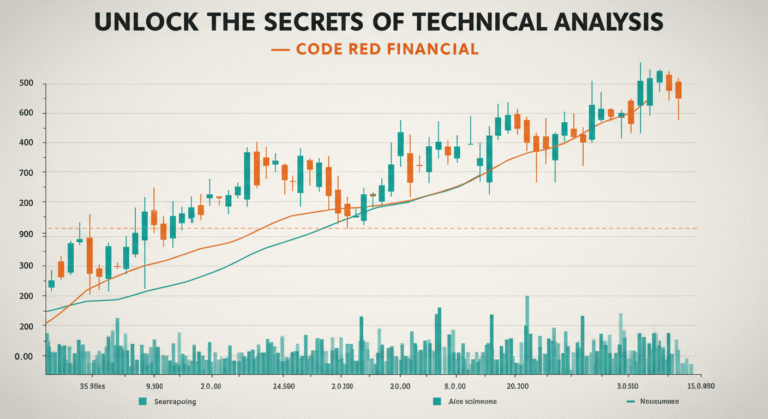
Introduction to the Psychology of Spending
The psychology of spending delves into the intricate mental and emotional processes that drive our purchasing decisions. It is an exploration of the underlying motives, feelings, and cognitive biases that influence how and why we allocate our financial resources. Understanding spending psychology is crucial for maintaining financial health, as it sheds light on the often-subconscious triggers that lead to overspending and financial strain.
In today’s consumer-driven society, where marketing tactics are increasingly sophisticated and pervasive, the relevance of spending psychology cannot be overstated. Advertisements and social media continuously bombard us with messages that encourage consumption, making it progressively challenging to resist the impulse to buy. By comprehending the psychological factors at play, individuals can develop more mindful spending habits and make informed financial decisions.
This blog post will explore several key aspects of spending psychology. We will examine the various reasons behind our spending behaviors, including emotional factors such as stress, happiness, and self-esteem. Additionally, we will discuss cognitive biases like the ‘sunk cost fallacy’ and ‘immediate gratification,’ which can distort our financial judgments. Furthermore, we will provide practical strategies for controlling the impulse to overspend, including budgeting techniques and mindfulness practices.
By the end of this post, readers will have a deeper understanding of how their emotions and thoughts influence their financial behaviors. Equipped with this knowledge, they can take proactive steps towards achieving better financial well-being and resisting the myriad of temptations that consumer culture presents. Through a careful examination of spending psychology, we aim to empower individuals to make more conscious and controlled spending decisions.
The Emotional Drivers of Spending
Understanding the psychology of spending requires delving into the emotional factors that often influence our financial decisions. Emotions such as happiness, stress, and boredom can significantly impact our spending habits, occasionally leading to impulsive purchases.
One prevalent concept in this realm is “retail therapy.” This term describes the act of shopping as a way to improve one’s mood. When people feel down or stressed, buying something new can provide a temporary emotional lift. For example, someone who has had a tough day at work might purchase a new outfit or gadget as a form of self-reward, even if they don’t necessarily need it. The immediate joy and satisfaction from acquiring new items can momentarily alleviate negative feelings.
Additionally, the feeling of happiness can also drive spending. When individuals are in a positive emotional state, they may be more inclined to make purchases that enhance their current mood. For instance, celebratory events such as birthdays or promotions often lead to higher spending on gifts, dining out, or vacations. These expenditures, while sometimes necessary, can also veer into the territory of unnecessary splurges.
On the other hand, boredom is another emotion that can trigger the impulse to buy. When people are bored, they might turn to shopping as a form of entertainment or distraction. This phenomenon is particularly evident in the age of online shopping, where the convenience of browsing and purchasing products from home can lead to frequent, unplanned buys. An individual might not need a new kitchen gadget, but the allure of something novel can be hard to resist when boredom strikes.
Emotional spending is a complex behavior influenced by a variety of psychological factors. Recognizing these emotional triggers can be the first step in gaining control over one’s spending habits, ensuring that purchases are made mindfully rather than impulsively.
The Role of Marketing and Advertising
Marketing and advertising are powerful tools employed by businesses to drive consumer behavior. By leveraging psychological triggers, advertisers craft campaigns designed to influence spending habits. One prevalent tactic is the concept of scarcity, which creates a sense of urgency by suggesting that a product is in limited supply. This perceived scarcity often leads consumers to make impulsive purchases for fear of missing out on a valuable opportunity.
Another effective strategy is social proof, where advertisers showcase product popularity and endorsements by influencers or satisfied customers. This technique capitalizes on the human tendency to conform to the actions and opinions of others, thus encouraging individuals to buy products that appear to be widely accepted and trusted.
Emotional appeal is also a critical component in marketing strategies. Advertisers often craft narratives that evoke emotions such as happiness, nostalgia, or even fear. These emotional triggers can create a strong connection between the consumer and the product, making the purchase seem more meaningful and justified.
Understanding these marketing tactics is crucial for consumers who wish to make informed purchasing decisions. Recognizing the psychological mechanisms at play can help individuals resist manipulative marketing and avoid unnecessary expenditures. For instance, questioning the urgency of a “limited-time offer” or seeking objective reviews beyond sponsored endorsements can provide a clearer picture of a product’s true value.
Furthermore, the importance of critical thinking and media literacy cannot be overstated. Consumers who are adept at analyzing advertising messages are better equipped to discern genuine offers from those designed to exploit psychological vulnerabilities. By fostering these skills, individuals can navigate the complex landscape of modern marketing with greater confidence and control over their spending habits.
Social and Cultural Influences on Spending
Spending behaviors are profoundly shaped by social and cultural factors. Societal norms, peer pressure, and cultural values play significant roles in determining how and why individuals make purchasing decisions. These influences can manifest in various ways, influencing everything from daily spending habits to significant financial commitments.
One of the most pervasive cultural phenomena affecting spending is the concept of “keeping up with the Joneses.” This phrase encapsulates the drive to match or exceed the lifestyle and possessions of one’s peers. The pressure to conform to societal expectations can lead individuals to make purchases that align with the perceived standards of their social circle, often resulting in unnecessary or extravagant spending. This behavior is not only driven by direct interactions with peers but is also heavily influenced by broader societal trends and media portrayals of success and happiness.
Social media has significantly amplified this pressure. Platforms like Instagram, Facebook, and TikTok present idealized versions of life, showcasing curated images of luxury, travel, and consumer goods. These portrayals can create a sense of inadequacy or FOMO (fear of missing out), pushing individuals to spend money in an attempt to emulate these lifestyles. The constant exposure to idealized content can distort perceptions of normalcy, making it difficult to distinguish between genuine needs and socially driven desires.
Cultural values also play a crucial role in spending habits. Different cultures prioritize various aspects of life, such as family, education, or leisure, which can influence spending priorities. For instance, in cultures where familial obligations are paramount, significant financial resources may be allocated to family-related expenses. Awareness of these cultural values can help individuals understand their spending patterns and make more conscious financial decisions.
By recognizing the impact of social and cultural influences on spending, individuals can develop strategies to mitigate their effects. This awareness can lead to more mindful consumption, where purchases are made based on actual needs and personal values rather than external pressures. Techniques such as setting financial goals, creating budgets, and practicing delayed gratification can further support conscious spending choices.
Identifying and Understanding Personal Spending Triggers
Grasping the psychology of spending is pivotal in managing one’s finances effectively. Identifying personal spending triggers is the first step in this process. Spending triggers are events, situations, or emotions that prompt an individual to make unnecessary purchases. Recognizing these triggers can help in developing strategies to counteract impulsive spending and foster financial discipline.
Common spending triggers include sales events, credit card usage, and specific environments such as malls or online stores. Sales events, particularly those with limited-time offers, create a sense of urgency that can lead to impulsive purchases. The convenience and perceived affordability of using credit cards often mask the reality of overspending, making it easier to ignore budget constraints. Additionally, environments like malls or online shopping platforms are designed to stimulate spending through strategic placements and targeted advertisements.
To identify personal spending triggers, self-reflection and tracking spending habits are essential. Begin by maintaining a spending journal where each expenditure is recorded along with the context in which it occurred. Note the time, place, and emotional state during the purchase. Over time, patterns will emerge, highlighting specific triggers. For instance, some individuals may find that stress or boredom leads to online shopping sprees, while others may be swayed by promotional emails or social media ads.
Practical tips for managing these triggers include setting specific budget limits, using cash instead of credit cards, and avoiding tempting environments. Establishing a monthly budget can provide clear financial boundaries and reduce the likelihood of overspending. Opting for cash transactions can make spending feel more tangible and discourage excessive purchases. Additionally, limiting exposure to high-risk environments, such as unsubscribing from promotional emails and avoiding frequent visits to shopping centers, can significantly reduce impulsive buying.
Understanding personal spending triggers is crucial in developing better spending control. By recognizing and addressing these triggers, individuals can make more informed financial decisions, reduce unnecessary expenditures, and ultimately achieve better financial health.
Strategies to Control Overspending
Controlling the impulse to overspend requires a multi-faceted approach, incorporating both practical techniques and mindset shifts. A primary strategy is budgeting, which serves as the foundation for financial discipline. Begin by assessing your income and expenses to create a realistic budget that allocates funds for essential needs, savings, and discretionary spending. This roadmap helps in identifying areas where expenditures can be minimized, and savings maximized.
Setting clear financial goals is another effective strategy. Whether it’s saving for a major purchase, building an emergency fund, or planning for retirement, having defined objectives provides motivation and direction. Break down larger goals into manageable milestones to track progress and maintain focus.
Mindfulness plays a significant role in curbing overspending. Practicing mindfulness involves being conscious of your spending habits and understanding the emotions that drive them. Before making a purchase, pause to reflect on whether it aligns with your financial goals and necessities. This practice helps in distinguishing between impulse buys and thoughtful spending.
Creating and adhering to a spending plan is crucial. Outline your monthly expenses and compare them against your budget. Use tools like spreadsheets, budgeting apps, or financial journals to monitor your spending. Regularly reviewing your financial activities ensures that you stay on track and make adjustments when necessary.
Developing healthy financial habits is key to maintaining control over spending. This includes automating savings, paying bills promptly to avoid late fees, and avoiding high-interest debt. Cultivating these habits gradually leads to improved financial well-being.
Seeking support when needed can be immensely beneficial. Engage with a financial advisor or join a financial literacy group to gain insights and share experiences. Support networks provide accountability and encouragement, making it easier to adhere to your financial plans.
Finally, the advantages of financial discipline and mindful spending are significant. Achieving financial stability not only alleviates stress but also improves your quality of life and creates future opportunities. By adopting these strategies, you can gain control over your finances and experience the peace of mind that comes with responsible spending.








Awesome article! I particularly enjoyed the part about setting clear goals.